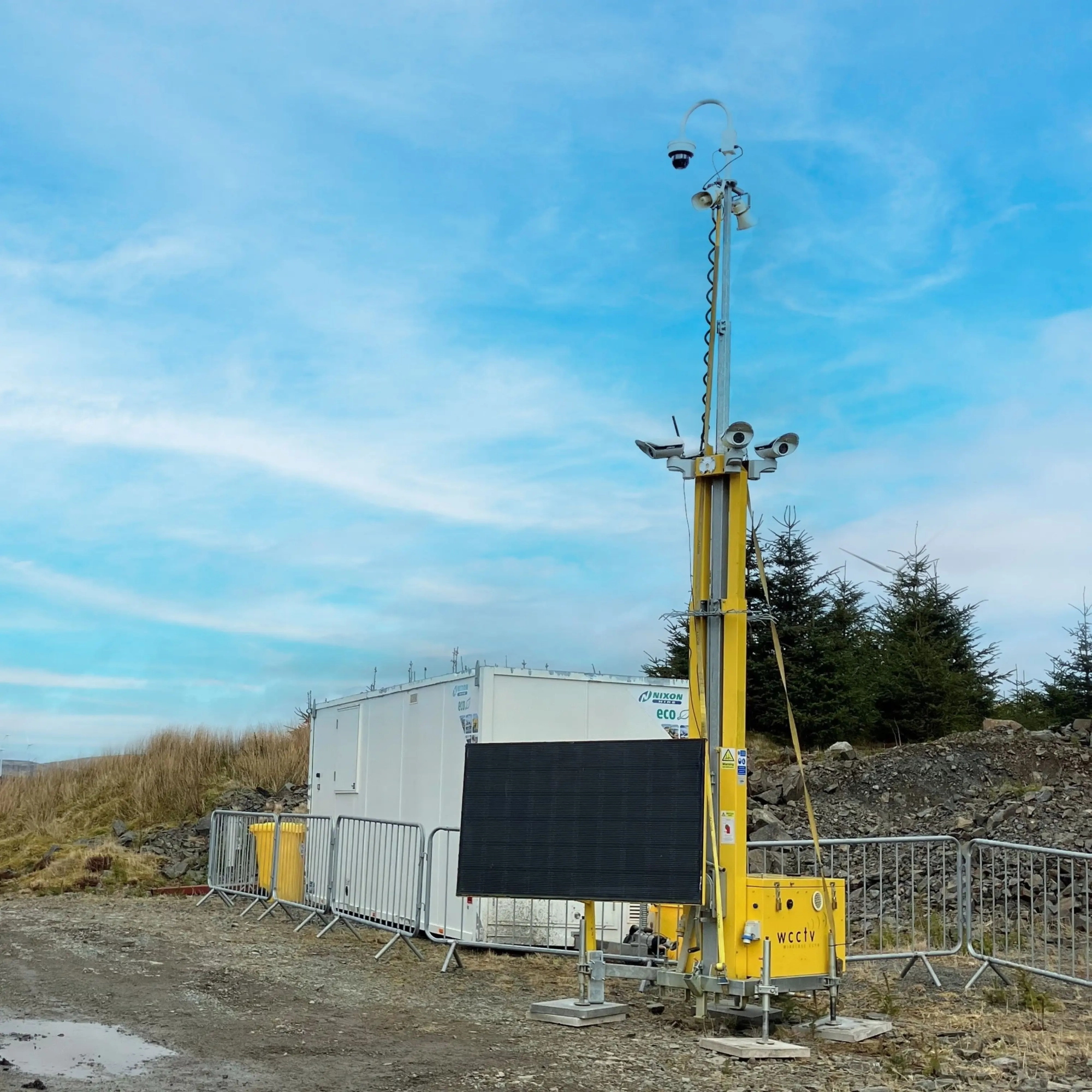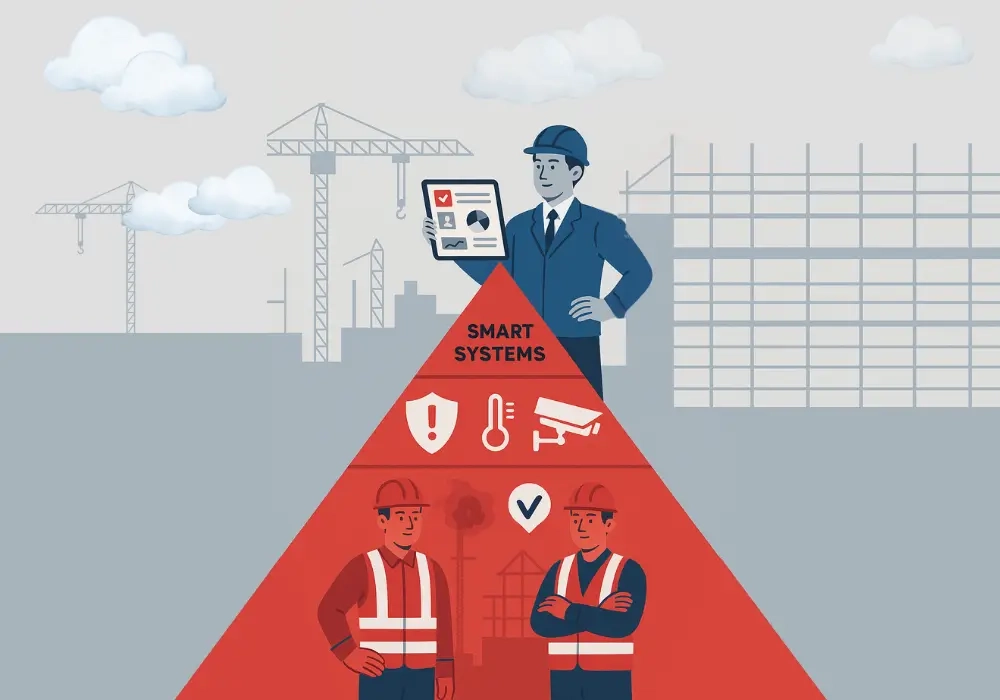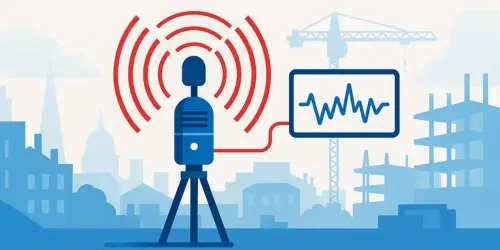Construction firms are operating under unprecedented regulatory pressures, from health and safety to environmental standards. One safety breach or poor data oversight can escalate quickly into financial and reputational damage.
Yet, even with these risks, many firms continue to rely on fragmented, manual processes that undermine the purpose of compliance, which is to keep people, property and data safe.
In order to fight the ‘red tape’ view held towards compliance, construction firms need to make a cultural shift to help build a proactive, more evidence-driven approach across every site. We explore why construction faces the greatest challenges with compliance, as well as strategies and tools to help overcome these.
Why Compliance Culture Determines Construction Risk Exposure
Regulations are rarely the greatest risks within construction, it’s rather how teams interpret and action these on-site, hence the need for a strong compliance culture. This involves ensuring good safety procedures, reporting requirements, and construction site standards are followed by all individuals.
By improving this, construction firms can reduce the likelihood of incidents, fines, project delays and reputational damage.
Left alone, compliance will continue to be seen as an administrative burden and ‘red tape’ to workers, leading to slips in behaviour and poor documentation that can escalate quickly, without anyone noticing until it’s too late.
And with HSE penalties only increasing and growing scrutiny surrounding ESG standards across the UK, construction firms must embed compliance into everyday operations, not just for audits.
Firms that demonstrate this are the ones best positioned to protect their workforce, maintain project schedules and quality and display due diligence to clients and regulators.
The Compliance Culture Gap in Construction
Even with construction being one of the most regulated industries, compliance still remains a challenge for most firms, with it often being treated as ‘red tape’ rather than the daily risk-control tool that it is.
This difference in view creates a gap between written procedures and on-site policies to real, on-the-ground behaviour, where these policies tend to be followed inconsistently and cause a delay in reporting.
For many construction firms, the realities of poor compliance culture only comes to the surface when an incident or audits occurs, forcing the attention of the business.
Common gaps driving problems with compliance culture within construction include:
-
Perception gap - Workers often perceive compliance as a blocker, not a safety and performance enabler
-
Process gap - Heavy reliance on manual checks and spreadsheets which slows down reporting and increases the risk of errors.
-
Visibility gap - Limited real-time oversight across multiple sites and subcontractors making compliance monitoring difficult and inconsistent.
-
Accountability gap - Compliance ownership often sits with one function rather than being embedded into site leadership.
-
Integration gap - Compliance monitoring tends to be spread across various applications, leading to disconnected systems that manage HSE, ESG, CCTV and incident logs which prevent a single source of information.
Until the gaps are closed, cultural resistance will only persist, meaning, so does the risk exposure.
The Compliance Manager’s Challenge: High Stakes, Limited Resources
Compliance leaders face daily challenges that carry heavy accountability, especially within the unpredictable world of construction where regular audits occur and there’s a high risk of workplace injuries.
From staying ahead of shifting regulations to managing worker safety, the role of compliance managers must constantly display due diligence across multiple sites and protect firms from fines, incidents and reputational damage.
This pressure only heightens due to the lack of resources and limited budgets placed on most compliance teams. Add in the strain of manual, fragmented reporting, and compliance managers are fraught with problems.
Chasing evidence through mounds of paper spreadsheets, searching fragmented systems and carrying out constant manual checks, visibility becomes limited, errors occur and compliance continues to feel like ‘extra admin’ to site workers.
The result for compliance managers is constant firefighting, reacting after incidents have occurred and in the moment of an audit, instead of providing them with proactive risk controls. Hence the need for a cultural shift and modernisation to monitoring systems.
What a Strong Compliance Culture Looks Like in Construction
A strong compliance culture can be seen in people’s everyday activities on-site and throughout the business, not just in the policies provided by your firm.
In reality, it’s a visible, repeated display of behaviour and working that helps reduce risks, improve worker safety and makes compliance easier to maintain as a business.
There are several signs you should be able to see that indicate your construction firm has a strong compliance culture:
-
Safe practices during everyday site activity - Teams are following safety and environmental requirements as part of their role, not additional work around inspection periods.
-
On-site workers understand ‘why’, not just as obligations - Site workers can connect compliance with real-life outcomes, such as fewer incidents, smoother project schedules, stronger client relationships and lower daily pressure.
-
Clear ownership for both site managers and compliance leaders - Supervisors and site managers display behaviour whereby standards are shown to be reinforced with on-site workers, removing the heavy reliance on small compliance teams.
-
Evidence capture becomes routine, consistent and faster - Data and incident reports are collected in real-time through the support of smart monitoring systems, avoiding the time-consuming manual processes.
-
Clear, real-time visibility available 24/7 across all sites - Site managers and compliance leaders can see risks early through a centralised system, whether that’s PPE issues, environmental breaches or excessive noise.
-
Reporting becomes automated, not reliant on paper processes - HSE reports, ESG metrics and audit trails all become available at the click of the button, with compliance teams freed up to focus on staying ahead of regulations.
-
Compliance is discussed as a strategic enabler, not as ‘red tape’ - Workers, managers and stakeholders treat compliance as quality control and are spoken about positively across the business.
-
Continuous improvement is normalised and encouraged - Near-misses, minor breaches and monitoring insights are utilised to strengthen processes, not apply blame, keeping teams engaged rather than defensive.
Even with this clear idea of what a strong compliance culture looks like, many construction firms continue to struggle with reaching this and maintaining it because of the constant operational and behavioural barriers that keep compliance teams in reactive mode.

Key Barriers Preventing Culture Shift
There are various common compliance failures that construction firms fall victim to, but one of the main being the lack of culture built throughout all phases of the business.
Although shifting compliance culture isn’t usually intentional, it is majorly blocked by the way compliance is operationalised by a construction firm. We outline some of the key barriers preventing culture shift:
Over-reliance on spreadsheets and manual audits
Manual reporting and spreadsheets are still at the centre of many construction firms, from incident logs and PPE checks to environmental readings and delivery details. However, the slowness of such processes for one site, let alone multiple lead to high risks with inconsistent and inaccurate data.
This means evidence gathering is delayed, so if any inconsistencies or inaccuracies are spotted, it’s likely to be too late. By the point of realisation, your firm may have already failed an audit and are facing costly fines.
Over time, this makes compliance feel like admin-heavy ‘catch-up work’ that is looked at as a burden or that creates a constant feeling of being on edge with upcoming audits, rather than as real-time risk control that is protecting employees and the business.
For workers, this time-consuming task could lead them to rush data entry or missed readings, unintentionally causing increased risk exposure. And the result of that for compliance teams is picking up from the fallout of this, whether that’s sifting through reports, responding to financial penalties or establishing the cause of an incident with little information.
Essentially, this reliance on spreadsheets and manual audits only further embeds a negative compliance culture within the business where employees still view it as ‘red tape’ and a blocker to keeping projects on schedule.
Poor integration between systems
Even with technology involved, construction sites have various requirements which often lead to fragmented systems in order to manage each compliance area on-site.
From CCTV systems and environmental monitoring to reporting software and AI risk detection, having them live in all different places is difficult to manage, especially when covering multiple sites.
When systems don’t work together, compliance teams are left spending hours of their time reconciling data instead of proactively managing risks.
However, this is not the only challenge presented, fragmented systems bring complexities with audits and board reporting as compliance teams will need to manually gather data from various systems. This creates uncertainty and personal liability for compliance leaders who need to be confident in what’s being monitored and who are signing this off for audits.
Keeping systems separate doesn’t allow compliance teams to truly assess sites, and therefore, leads to decision-making based on assumption and inconsistent data, preventing firms from being able to shift compliance culture long-term.
Limited real-time oversight across multiple sites
Construction is unpredictable, from weather disruption to changing subcontractors and regular supplier visits, conditions change daily, even hourly, and this comes with risks. Without real-time visibility, compliance teams are forced to be reactive in these instances.
Discovering issues during inspections, after incidents or once a regulator has spotted it, which comes with hefty consequences.
That delay in visibility is where exposure to risks grows; where a lapse in PPE turns into an injury, excessive dust leads to a stop-work order or a missing data entry causes a failed audit and expensive fine.
The lack of live visibility is costly and undermines the idea of a strong compliance culture as it prevents the enabling of a proactive approach, and rather leaves teams forgetting about it until an incident occurs.
Workforce misconceptions about compliance slowing projects
Site teams often face the most repetitive, tedious and time-consuming tasks of paperwork, manual checks, audit preparation and taking corrective action to avoid compliance breaches or project delays.
These tasks shape their perspective on compliance being a blocker of project success and sustainability, making it appear as an obligation, not as a strategic enabler for enhanced construction site safety and security. This means workers tend to only comply when required or on a minimal basis when being watched.
A true cultural shift will only occur when compliance is repositioned as a strategic enabler that can prevent rework, protect workers, keep projects on schedule and minimise the risk of financial or legal claims.
And to do this, site managers and compliance teams need to be provided with the tools and strategies that can overcome these challenges, whilst being ebay-to-follow.
Strategies and Tools to Shift Compliance Culture Across Construction Sites
Simply sending out more policies isn’t enough to shift compliance culture in construction, firms need to change the daily experiences and activities surrounding compliance on site.
A cultural shift will only truly occur when compliance becomes visible and can be clearly linked to safer, smoother project completions, rather than mounds of paperworks and spreadsheets that only take place during audits.
Smart monitoring systems are fast-becoming some of the most popular and effective solutions at dealing with this. Combining CCTV, environmental monitoring, smart detection and centralised reporting, all into one space.
This consolidates compliance, creating clear visibility and providing data insights in real-time that can be turned into actionable insights, that both enhance safety and security on site.
Our in-house platform, Stellifii supports this shift by turning our CCTV systems into proactive compliance tools, removing the reactive, manual processes that place barriers on transitioning your workplace culture.
This smart system integrates all key compliance areas, creating secure access to incident logs, environmental readings, live surveillance footage and dashboard reporting, meaning that decisions are made collectively, not just from fragments of information.
Below breaks down the key tools Stellifii provides, what they do and how they support firms in shifting compliance culture on construction sites
| Stellifii Tool | What it Does | How it Shifts Compliance Culture in Construction |
| PPE Detection | Detects if workers are wearing the correct PPE on-site, from hard hats, high vis, safety goggles and ear protection. Any non-compliance will be logged and time-stamped, and real-time alerts will be sent out. | Makes PPE adherence visible and objective, reducing confusion and embedding safe behaviour as part of workers’ everyday roles, not just an audit checkbox. |
| Environmental Monitoring | Tracks environmental conditions, including weather, air quality and noise for compliance and ESG requirements. Triggers alerts when thresholds are exceeded. | Helps keep environmental conditions within regulatory limits in real-time, bringing compliance into everyday site discipline. In turn, supporting proactive ESG delivery throughout the entirety of a project. Removes the scramble around audits. |
| Smoke and Fire Detection | Monitors signs of smoke and fire on-site, and if triggered, alerts will be sent in real-time to managers, security teams and/or emergency services to respond. | Reinforces your commitment to construction site safety and zero-tolerance risk behaviour on-site. Helps teams treat fire risk control as a continuous and shared responsibility for all, not just a checklist task. |
| Intrusion Detection | Tracks movement and trends to establish unauthorised access on or near a site. Following this, real-time triggers are alerted and action taken via remote monitoring to prevent escalation. Incident reports are then created with timestamped footage and a clear report on the actions taken. | Emphasises and imparts a culture of proactive site security and documenting due diligence as a business. Provides protection with third-party visitors and suppliers, and ensures access concontrol is measurable, enforceable and audit-ready. Removing the need for reactivity, collecting documents and incident logs last minute for regulators. |
| Performance Diagnostics | Built-in performance monitoring of our systems to identify signs of inefficiencies or technical errors. Smart switch technology that allows the system to be switched on/off remotely. | Displays your firm’s commitment to continuous site protection and security, encouraging others to uphold their ability in this also on-site. Ensures accountability, showing that every individual throughout the business is responsible for compliance. |
| Secure Cloud Software | Utilises encrypted pathways and centralises data into one secure dashboard, supporting full audit trails. | Places fragmented systems and paper spreadsheets into a singular dashboard. Makes compliance visible, clear and measurable whilst improving overall confidence in reporting and reducing personal liability risks across the business. |
| Mobile App | Advanced mobile app that gives managers and teams access to live surveillance footage, real-time alerts, data and reports, wherever you are. | Provides shared ownership across your sites and shifts, allowing compliance to travel wherever managers go. |
| Live Monitoring | Provides real-time video/sensor oversight through our CCTV Towers or Redeployable CCTV Cameras, which offer advanced PTZ cameras. Keeps track of projects in real time, and reacts to threats in the moment. | Transitions compliance from reactive to proactive by allowing for immediate intervention and more targeted prevention methods, providing better site-level accountability. |
Through the power of Stellifii, our CCTV systems help construction firms do more than just meet compliance requirements, it changes the culture surrounding it. Providing data-backed information that can be imparted into everyday site behaviour, building clear, concise reports for audit preparation and preventing intrusion, theft and vandalism.
By integrating evidence gathering, real-time monitoring and automated reporting, Stellifii removes the friction that fuels the cultural resistance within construction sites and replaces them with clarity, accountability and safer habits that can be easily scaled across multiple projects.
But, what if your firm didn’t take action to shift compliance culture? What would be the result then?
Read More:
-
Weather Monitoring Tools That Keep Construction Projects on Track
-
AI-Powered Risk Detection: Smoke, Fire and PPE Compliance in Construction

The Cost of Inaction for Construction Teams
When compliance doesn’t evolve, or the systems to support this, risk exposure will continue to remain high regarding construction site safety and security. Manual reporting, delayed evidence gathering, inconsistent data entry and cultural resistance push teams into reactive mode, where small gaps turn into incidents, project mishaps and fines.
Over time, inaction only makes compliance harder, expensive and exposes compliance leaders and site managers at risk of personal liability.
There are several costs, not just financial-related, that commonly occur due to continuous inaction within construction firms:
-
Increased risks of HSE and environmental breaches, leading to fines, enforcement action or stop-work notices.
-
More on-site incidents and near-misses due to unsafe behaviour on the ground that aren’t spotted or corrected soon enough.
-
Project delays and rework faced due to a compliance failure appearing late, whether that’s during audits, client checks or after an incident.
-
Weak audit trails and reporting errors based on spreadsheet dependency, increasing the risk of organisational and personal liability.
-
Lost tenders and client trust as ESG, safety and governance standards become more prioritised by clients.
-
Compliance burnout with leaders and site managers due to being in constant firefighting mode, only able to react in the moment or following an event. This leads to last-minute pressure, stress and potentially leads individuals to leave a business.
Through consolidated smart monitoring, these side effects can be avoided, without the fear of an expensive price tag.
Building a Compliance-First Future in Construction With WCCTV
At WCCTV, our systems and software are designed specifically to build, support and maintain a compliance-first culture across all levels within construction.
Moving beyond manual processes, our technology-driven model overcomes those common compliance pitfalls and prioritises safety and security during the daily site operations at every site.
With Stellifii, our systems are able to combine real-time monitoring, automated evidence gathering and reporting into one centralised platform, helping firms reduce their risk exposure, strengthen audit trails and make compliance simpler for workers on-the-ground.
A strong compliance culture is about consistency and our systems provide that. Backed by a fully-managed service, we provide installation, ongoing customer care, technical support, performance diagnostics and maintenance, that ensures you receive consistent support to keep projects on schedule and compliant.
This results in a cultural shift across the company that is maintainable throughout. Forget the ‘red tape’ perception of compliance, WCCTV helps it become a trusted enabler of safer, more secure sites that are futureproofed with new and existing clients.
Enquire with us today to see how Stellifii delivers real-time site oversight, automated audit trails and measurable culture change across your projects.




